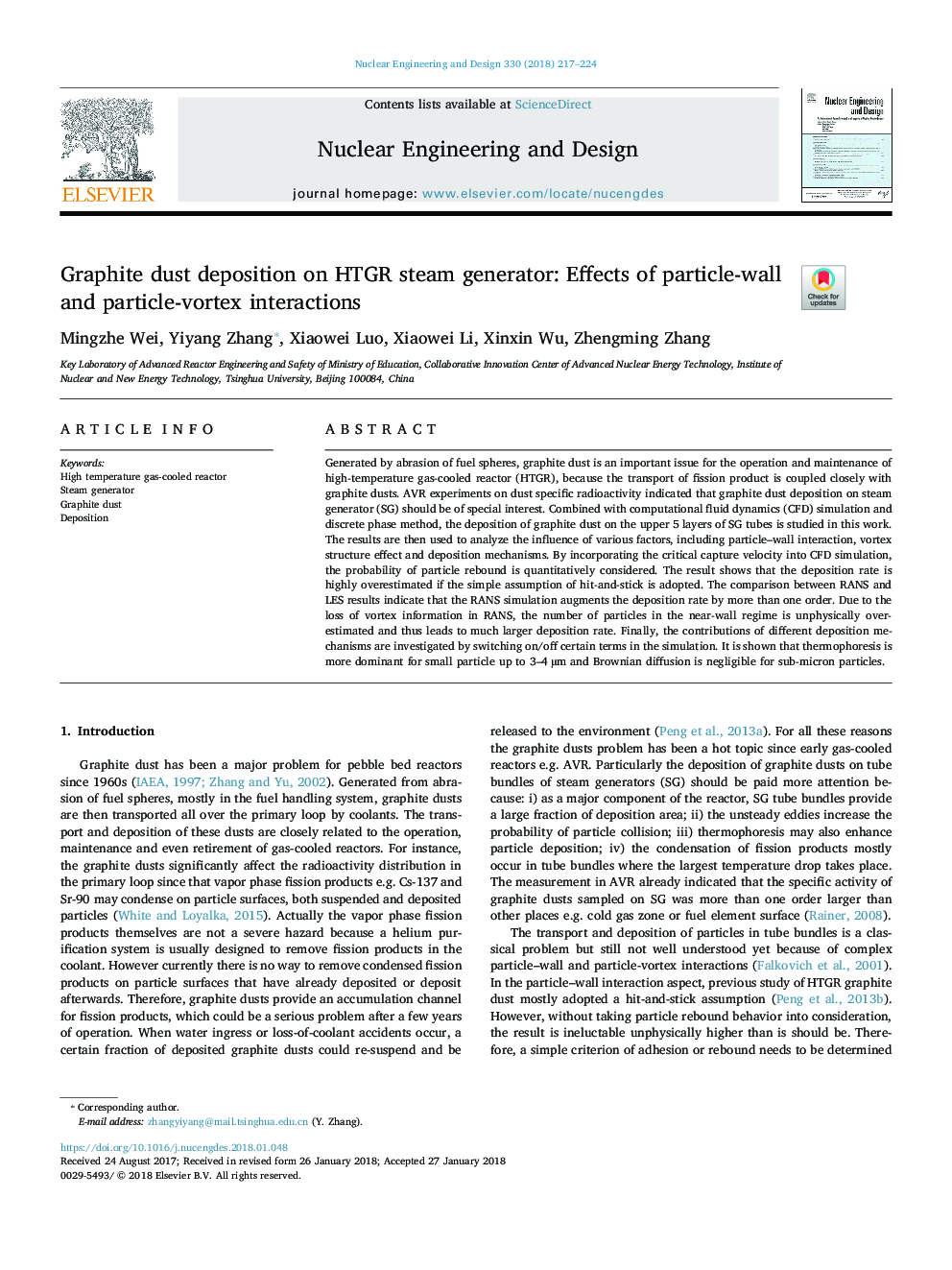| Article ID | Journal | Published Year | Pages | File Type |
|---|---|---|---|---|
| 6759137 | Nuclear Engineering and Design | 2018 | 8 Pages |
Abstract
Generated by abrasion of fuel spheres, graphite dust is an important issue for the operation and maintenance of high-temperature gas-cooled reactor (HTGR), because the transport of fission product is coupled closely with graphite dusts. AVR experiments on dust specific radioactivity indicated that graphite dust deposition on steam generator (SG) should be of special interest. Combined with computational fluid dynamics (CFD) simulation and discrete phase method, the deposition of graphite dust on the upper 5 layers of SG tubes is studied in this work. The results are then used to analyze the influence of various factors, including particle-wall interaction, vortex structure effect and deposition mechanisms. By incorporating the critical capture velocity into CFD simulation, the probability of particle rebound is quantitatively considered. The result shows that the deposition rate is highly overestimated if the simple assumption of hit-and-stick is adopted. The comparison between RANS and LES results indicate that the RANS simulation augments the deposition rate by more than one order. Due to the loss of vortex information in RANS, the number of particles in the near-wall regime is unphysically overestimated and thus leads to much larger deposition rate. Finally, the contributions of different deposition mechanisms are investigated by switching on/off certain terms in the simulation. It is shown that thermophoresis is more dominant for small particle up to 3-4â¯Âµm and Brownian diffusion is negligible for sub-micron particles.
Related Topics
Physical Sciences and Engineering
Energy
Energy Engineering and Power Technology
Authors
Mingzhe Wei, Yiyang Zhang, Xiaowei Luo, Xiaowei Li, Xinxin Wu, Zhengming Zhang,
